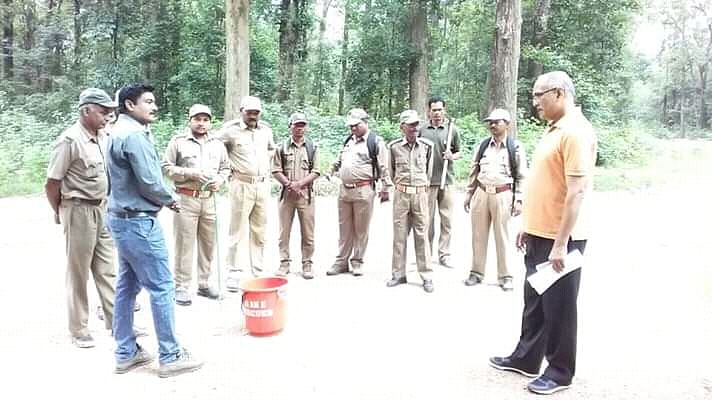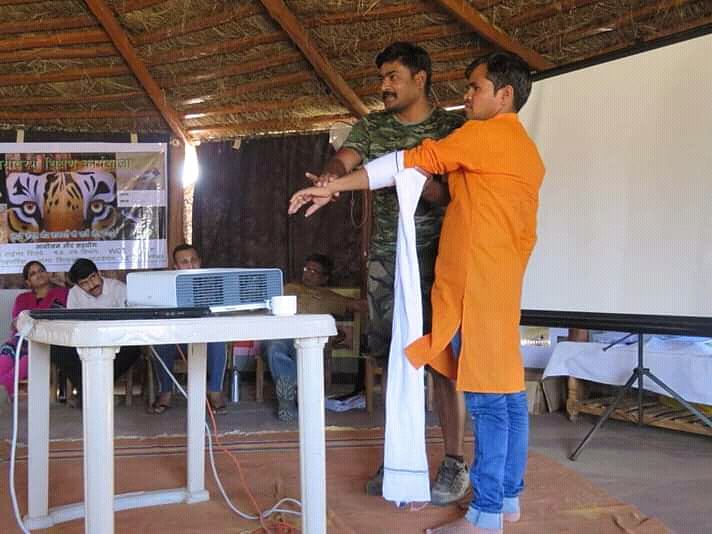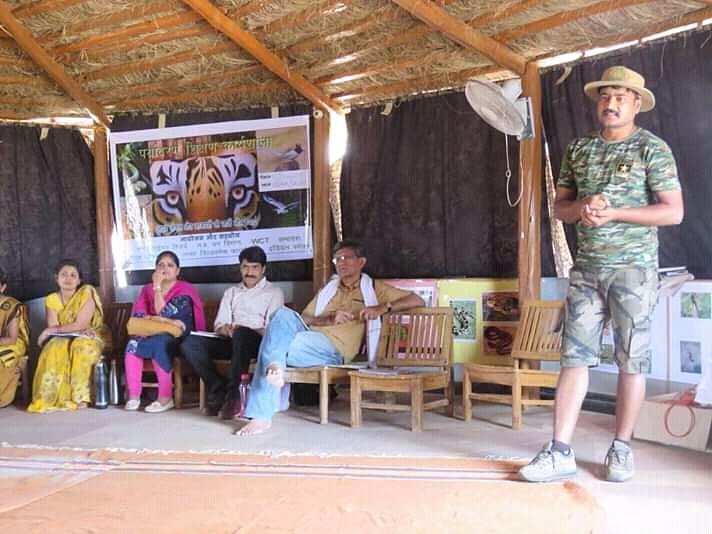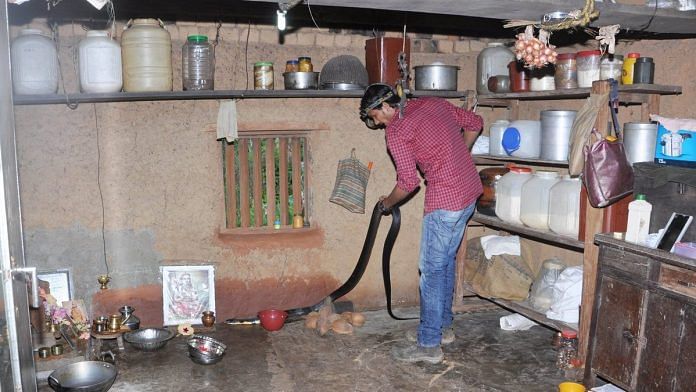Armed with a stick, bag and first-aid kit, rescuers are catching snakes & releasing them back into the forest.
Bengaluru: They are not snake charmers, but that’s all part of the charm.
A band of rescuers fans across India’s snake-infested interiors as soon as they are called, to rid households of unwanted serpentine guests and help the snakes find their way back into their jungle abode.
Their aim is simple: To mitigate human-snake conflict, avoid unnecessary deaths, and foil the plans of self-styled faith-healers who hold dozens in their sway with claims of “curing” people bitten by snakes that were not even venomous.
“[Earlier] When people saw snakes inside their houses, they would gather other family members or neighbours and stomp on the snake or hit it with whatever they could find, hoping to kill it,” said Sudarshan Sureshwar, a snake rescuer who has been working across five districts of Madhya Pradesh and Chhattisgarh for the past 15-20 years.
“I even saw many people die… because of such methods of handling snakes in and around houses or because of encounters with snakes in agricultural fields,” he added.

Also read: These life-saving drugs are made from deadly venom
India’s snakebite burden
India accounts for about half the global snakebite deaths. Data about disfigurements, disabilities and amputations due to snakebites only add to the grim statistics.
According to the World Health Organisation (WHO), “as many as 2.8 million people are bitten by snakes, and 46,900 people die from snakebite every year” in India.
It was only in 2017 that snakebite was added to WHO’s list of Neglected Tropical Diseases (NTDs) – a recognition that could bring some much-needed attention from policymakers and pharmaceutical companies.
But efforts at handling snakebites can only go so far, considering that not many village settlements in India have quick access to hospitals equipped with anti-venom stocks.
Then there is the lack of awareness: Not all snakes are venomous, but, in the absence of quick medical help, alarmed victims and their families often seek help from purported faith-healers.
“The problem is that most snakebites are from snakes that are non-venomous,” said Kaisar Hussain, a snake rescuer who works out of Jashpur, Chhattisgarh. “But people don’t know this and the faith-healers take advantage of this.”
Jashpur is also known as ‘Naaglok’ for its abundant snake population. “A snakebite from a non-venomous snake does not need healing, so when a faith healer works his ‘magic’ in such a situation, it seems like he has healed the victim,” Hussain added.
“And in the rare instances where victims succumb to bites from venomous snakes, the healers attribute it to fate.”

Also read: Human-animal conflict is clear & present danger, and India can’t afford to ignore it
Search and release
The image of the snake charmer, long a fixture at fairs around the country, is something most Indians grow up with: A man swaddled in flowing robes playing an instrument known as the pungi with exaggerated rotations of his head, as a snake, often the venomous king cobra, seems to move to his tunes.
Of course, it’s all an illusion. Snakes are deaf, and the reptile’s movements are only guided by the “menacing object”, the pungi, hanging over their heads.
What Hussain, Sureshwar and their colleagues do is not remotely similar.
When someone spots a snake in their house, for example, they place a call to the rescuers, who then arrive at the spot with the two essentials of the job: A long stick and a bag or any other container.
Snakes are usually as unnerved by interactions with humans as we are, and often withdraw into hiding when confronted.
The rescuers first look for the snake, then nudge it out of the “withdrawn” mode with the stick. They then use the stick to manoeuvre the snake’s movements and guide it into the bag.
They keep a first-aid kit at hand for possible injuries, as well as pamphlets containing some information about snake and snakebites for distribution. Once the snake is trapped, they carry it to a nearby forested or non-human-dominated area and release it.
According to the rescuers, locals have increasingly begun to trust them.
“Villagers across all the districts where I work immediately call me or another rescuer, rather than trying to kill or handle the snakes themselves,” said Sureshwar. “Even those from the Baiga tribe seek the help of rescuers.”
The Baiga tribe is a community of forest-dwellers based primarily in Madhya Pradesh.

Saving snakes too
Such efforts are saving the lives of snakes too, Sureshwar added.
Additionally, the rescuers also conduct awareness camps to educate people about the distinctions between venomous and non-venomous snakes, and to inform them about preventive measures, like wearing covered footwear while working in the fields, using torches at night, etc.
“I have also conducted many awareness camps in villages, some of which were with the help of the training I received from the Madras Crocodile Bank Trust (MCBT) and IndianSnakes,” said Sureshwar.
Based in Chennai, the MCBT and Centre for Herpetology (study of amphibians and reptiles) is a research and conservation organisation that also runs zoos.
IndianSnakes is a team of committed volunteers from across the country who head the Indian Snakebite Initiative under the leadership of Romulus Whitaker, a renowned American herpetologist and founder of the MCBT and the Chennai Snake Park.
“This [the awareness camps] has also sparked an interest in wildlife, in addition to making villagers less hostile towards snakes,” said Sureshwar.
“The old adage that ‘prevention is better than cure’ is so very appropriate to snakebite, which is why the Croc Bank’s project is primarily focused on rural outreach and awareness programmes,” Whitaker added.
Ajay Karthik, a project coordinator for snake conservation and snakebite mitigation at MCBT, said the organisation had been working towards reducing India’s snakebite burden by the year.
“We undertake education and outreach work in seven of the most snakebite-prone states in the country through our network of partners, which include rescuers and environment educators,” he added.
“We conduct awareness sessions for rural communities and students across rural India. Thus far, we’ve reached about 50,000 people across the states of Andhra Pradesh, Bihar, Jharkhand, Madhya Pradesh, Maharashtra, Odisha and Tamil Nadu.”
“Snake rescuers are an important resource in the efforts to conserve snakes and reduce snakebites,” said Whitaker.
“Once they prove themselves to be honest and sincere in their work, we give them all the support and educational materials they need to spread the word,” he added. “Every snake rescue is a perfect opportunity to reach out to people with the real facts about snakes.”







What are the measures to be taken after the snake bite especially in rural areas such as immediate medicine is not available.
Have courage to report full facts. Do not treat us as stupid idiots
Justice Sikri was offered post retirement job, for murdering democracy! Justice Sikri, your vote was so important. Why Verma was not even given a chance to explain? Now rejecting the offer after criticism! That can’t correct the matter.